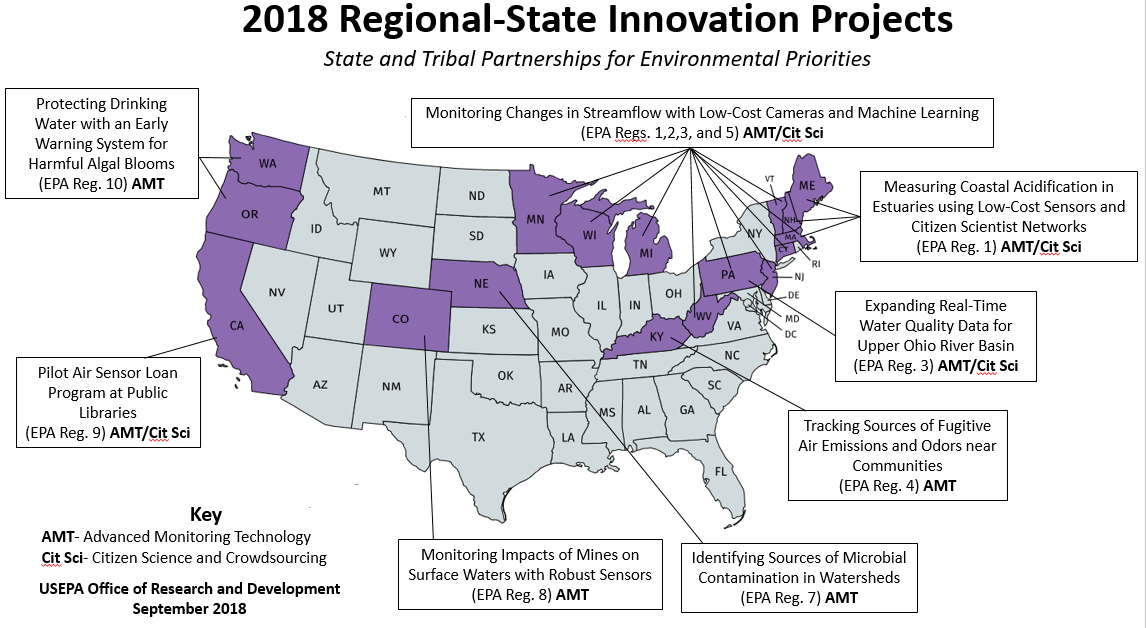2018 Regional-State Innovation Projects
EPA’s Office of Research and Development (ORD) provided an opportunity for the EPA Regions to submit proposals for projects using innovative approaches to address state science priorities. For 2018, we are excited to support 8 projects, across 9 Regional Offices, connecting with 17 state and tribal partners from coast to coast. The work will address a range of environmental challenges from communities burdened with multiple sources of odor-causing air toxics to mountain stream sections affected by acid mine drainage. The innovative approaches focus on advanced monitoring technologies and citizen science, and included: loaning air sensors through public library branches, testing technologies to identify sources of E Coli.; and training volunteers to monitor coastal acidification
These projects directly address challenges faced by state agencies and demonstrate how advancing science is essential to the work of states and EPA regions. Find out more information about the projects below. We will also be providing final updates on our 2017 Regional-State Innovation Projects and their outcomes as that work concludes. Please look for updates here.

|
Regions |
Partners |
Project |
|---|---|---|
|
Region 1 |
|
A Network of Citizen Scientists Measuring Coastal Acidification in Estuaries |
|
Regions 2, 3, 5 (with Region 1) |
|
Streamflow Monitoring Using Computer Vision Machine Learning |
|
Region 3 |
|
|
|
Region 4 |
|
Multi-component VOC Sensor System for Fugitive Emissions and Odor Identification |
|
Region 7 |
|
Use of PhyloChip for Microbial Source Tracking to Support Watershed Restoration in Nebraska |
|
Region 8 |
|
Temperature and Conductivity Profiling in Mine Impacted Surface Water |
|
Region 9 |
|
|
|
Region 10 |
|
